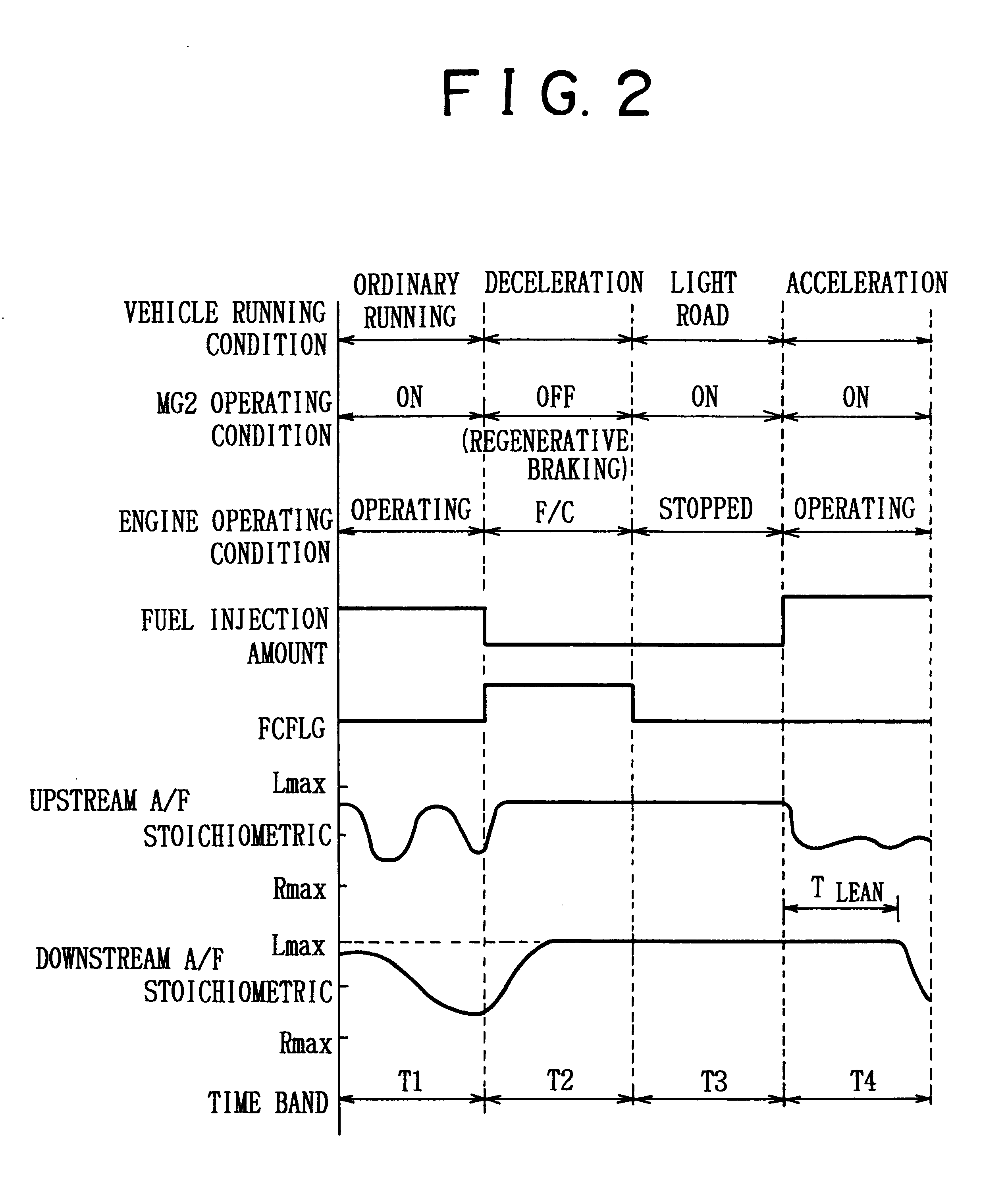Catalyst deterioration detecting apparatus for internal combustion engine
a technology of deterioration detection and internal combustion engine, which is applied in the direction of machines/engines, hybrid vehicles, electrical control, etc., can solve the problems of difficult to determine the deterioration of catalysts with high precision, degrade the performance of emission control, and difficult to maintain good emission quality
- Summary
- Abstract
- Description
- Claims
- Application Information
AI Technical Summary
Benefits of technology
Problems solved by technology
Method used
Image
Examples
Embodiment Construction
A preferred embodiment of the invention will be described with reference to the accompanying drawings.
FIG. 1 illustrates an overall construction of the embodiment of the invention. An internal combustion engine has a cylinder block 1, pistons 2, a cylinder head 3, combustion chambers 4, an intake manifold 5, and an exhaust manifold 6. The intake manifold 5 is connected to an air cleaner 10 via a surge tank 7, an intake duct 8, and an air flow meter 9. A throttle valve 11 is disposed in the intake duct 8. Fuel injection valves 12 are disposed in the intake manifold 5 so as to inject fuel toward intake ports 13. The exhaust manifold 6 is connected to an exhaust pipe 14. Disposed in partway of the exhaust pipe 14 is a three-way catalytic converter 15 that simultaneously lessens three major fractions of exhaust gas, that is, hydrocarbons (HC), carbon monoxide (CO), and oxides of nitrogen (NOx).
An electronic control unit 40 is formed by a digital computer having a ROM 42, a RAM 43, a bac...
PUM
 Login to View More
Login to View More Abstract
Description
Claims
Application Information
 Login to View More
Login to View More - R&D
- Intellectual Property
- Life Sciences
- Materials
- Tech Scout
- Unparalleled Data Quality
- Higher Quality Content
- 60% Fewer Hallucinations
Browse by: Latest US Patents, China's latest patents, Technical Efficacy Thesaurus, Application Domain, Technology Topic, Popular Technical Reports.
© 2025 PatSnap. All rights reserved.Legal|Privacy policy|Modern Slavery Act Transparency Statement|Sitemap|About US| Contact US: help@patsnap.com



